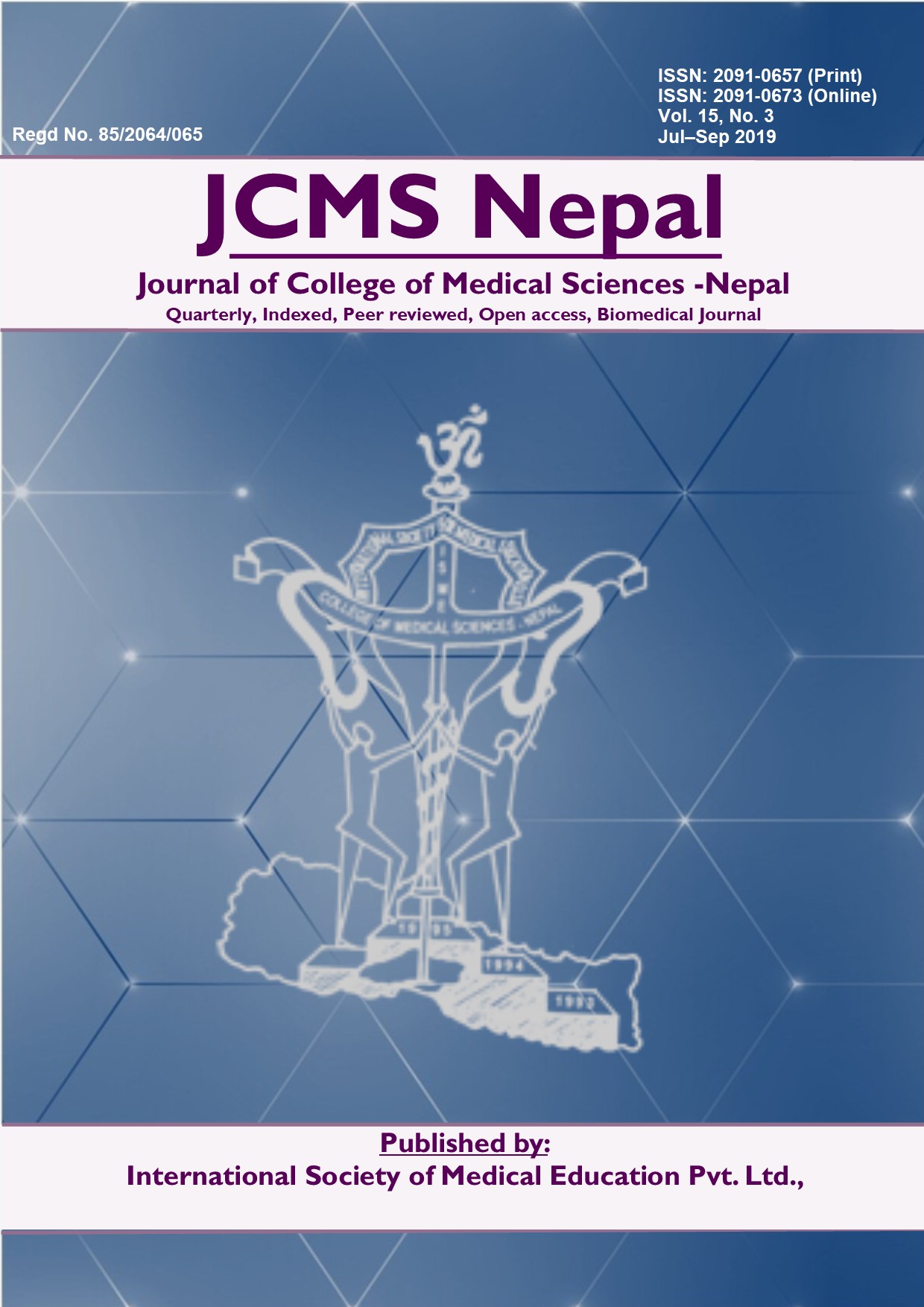Dynamic Hip Screw (DHS) versus Proximal Femoral Nail Anti-rotation (PFNA) Fixation for Unstable (Evans-Jensen II and III) Inter-trochanteric Fractures of Femur in Elderly
DOI:
https://doi.org/10.3126/jcmsn.v15i3.25554Keywords:
inter-trochanteric femur fracture; dynamic hip screw; proximal femoral nail anti- rotationAbstract
Background: Dynamic hip screw (DHS) and proximal femoral nail anti-rotation (PFNA) are the two most commonly used fixation devices for inter-trochanteric fracture of femur. However, many clinical studies have shown lack of differences in the clinical outcome consistently with between these two fixation techniques. The main objective of this study is to compare the results of dynamic hip screw (DHS) and proximal femoral nail anti-rotation (PFNA) fixation in elderly patients with unstable inter-trochanteric fractures of femur.
Methods: We retrospectively reviewed patients who underwent operative management for inter- trochanteric fractures of femur in our hospital between February 2013 and September 2017. Elderly patients (Age >60yrs) with unstable inter-trochanteric fracture of femur treated either with DHS fixation or with PFNA fixation were included and divided into two groups: DHS fixation group and PFNA fixation group. The comparative statistical analysis was done between two group using following parameters: average length of the incision, operation time, blood loss, fracture healing time, and degree of postoperative functional recovery.
Results: The mean follow-up period, in DHS fixation group was 16 month (range 12 to 24 months) and in PFNA fixation group was 14 months (range 12 to 18 months). The differences between two groups regarding average length of the incision, operation time, and blood loss were statistically significant (p<0.05) and better in PFNA group whereas the differences between two groups regarding fracture healing time and the degree of postoperative functional recovery were not statistically significant (p >0.05).
Conclusions: PFNA fixation may be better than DHS fixation for the treatment of unstable inter-trochanteric fractures of the femur in the elderly. However, the application and usage of DHS fixation could not be neglected and the choice of treatment depends upon the systemic condition and socioeconomic status of the patient, patient’s preferences, surgeon’s experience and availability of treatment facility.
Downloads
616
279




